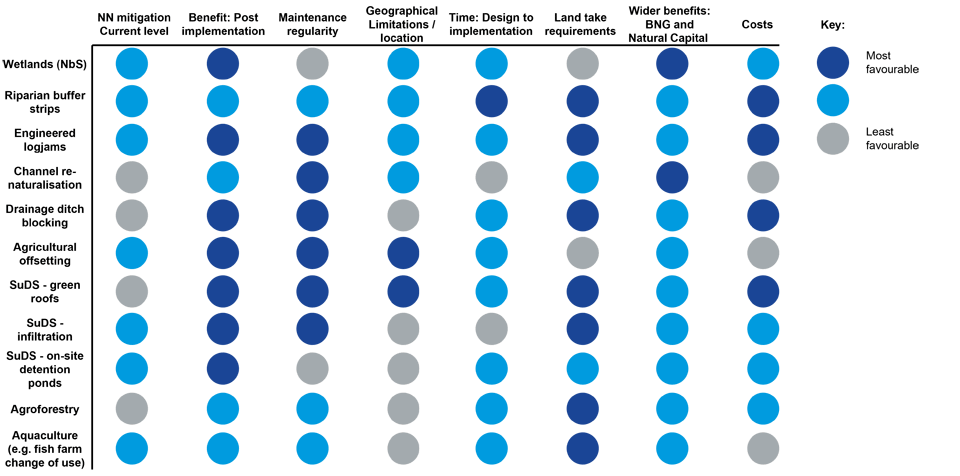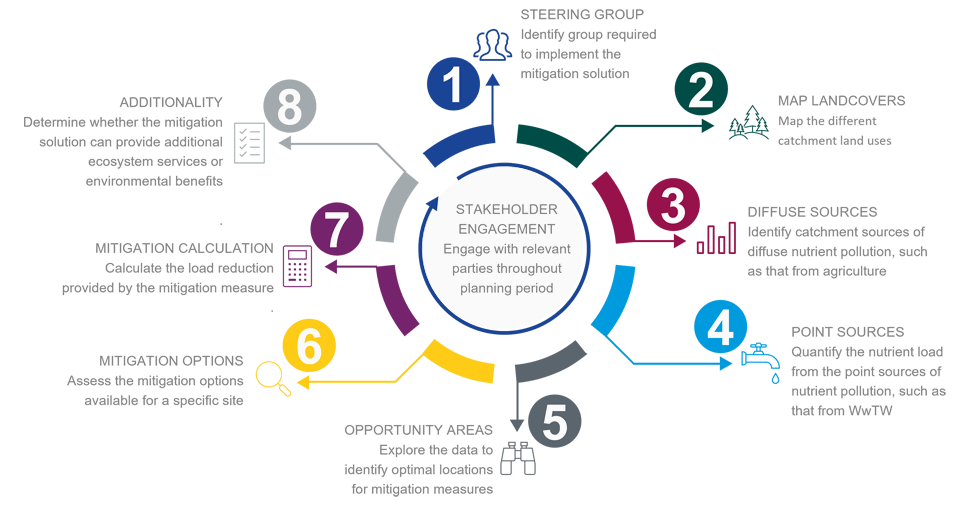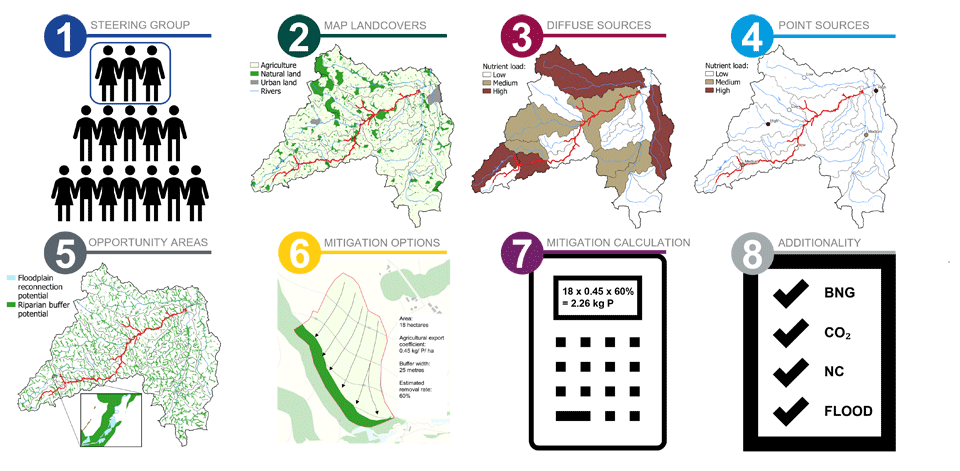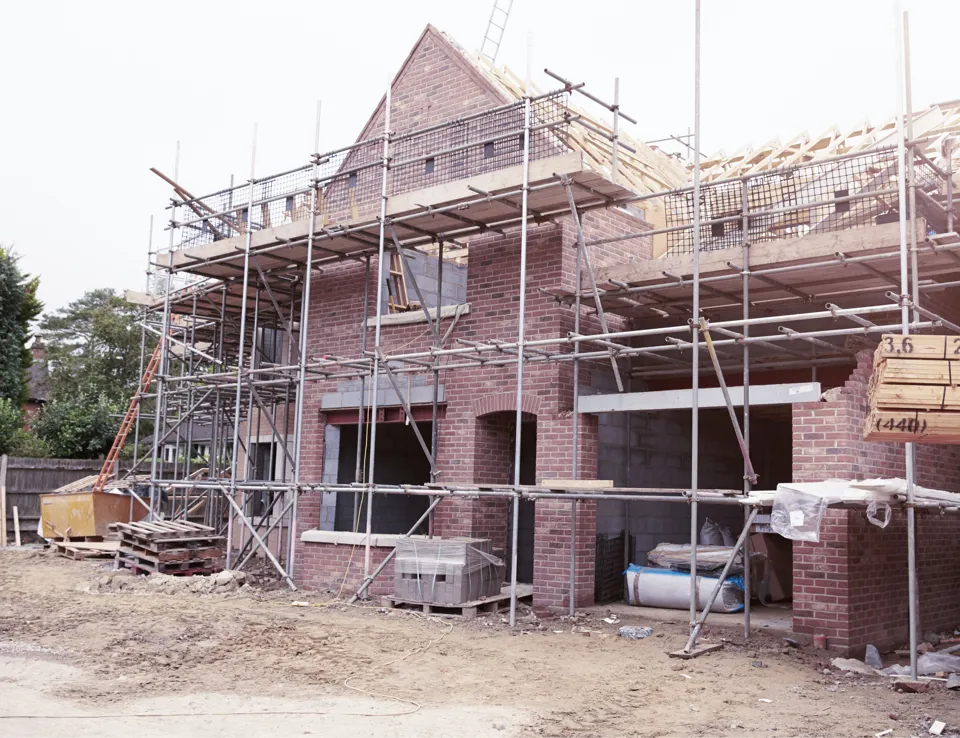Applying Nature-based Solutions for nutrient neutrality and wider benefits
Applying Nature-based Solutions for nutrient neutrality and wider benefits
In this blog, Ricardo’s nutrient neutrality experts discuss the potential for Nature-based Solutions (NbS) to mitigate nutrient neutrality and create wider benefits, whilst also considering how to bring these ambitions to life.
In July, the Dutch Ministry of Finance revealed plans to cut Nitrogen use by half in farms by 2030. On the 29 November 2022, an article stated that Dutch farmers have been told to either make farms more sustainable or risk facing compulsory buyout by the government to achieve EU targets and wider sustainability benefits. Clearly this is a very radical way of deploying ‘binding instruments’ for pollutant reduction and not one advocated in the UK. However, it is food for thought in terms of how land (especially marginal land) can support the issue of nutrient neutrality and wider environmental benefits.
Nutrient reduction via the levelling up bill by 2030
In the UK, the aim of the Environment Act (2021) is to halt species decline and as part of that reduce pollution. In the context of achieving nutrient neutrality, the focus is on upgrading wastewater treatment works (WwTW) to the highest technically achievable limits for dominant nutrients causing pollution by 2030. New limits to be set through the Levelling Up and Regeneration Bill (LURB) include phosphate pollution reduction from 8mg/l to 0.25mg/l, and nitrates from 27mg/l to 10mg/l, to remove nutrients at source and hence limit secondary effects. The intended reductions must be secured for the lifetime of a development, which is generally considered to be at least 80 years.
The problem: 2030 and beyond
Whilst WwTW upgrades can be quantified in terms of nutrient reduction, generally they provide limited additional environmental benefits. Just upgrading them is unlikely to fully support the Environment Bill’s requirement to improve biodiversity resilience or achieve Biodiversity Net Gain (BNG)1 as part of the planning process. Furthermore, schemes cannot be implemented quickly as they require detailed assessment over a 5-year spending period. NbS in conjunction with any future WwTW upgrades could be one way of bridging the nutrient neutrality requirement gap needed to unlock development now and achieve wider benefits over the longer term.
Natural England plans to create a nutrient mitigation scheme, with support from Defra, enabling developers in nutrient neutrality affected areas to be able to purchase “nutrient credits”. This is a positive step but, given the extent of the nutrient issues, it is unlikely that these schemes will cover the full amount of related nutrient reduction in the time frame before 2030 or even beyond. So other solutions need to be considered.
NbS for short-term nutrient neutrality mitigation and the case for stacking and bundling
Despite progress, achieving nutrient neutrality is likely to continue to drive UK developers to seek mitigation solutions that can be deployed quickly (to keep development on track and on budget) and achieve biodiversity gain and resilience overall. With the ongoing discussions around stacking and bundling credits for nutrient neutrality and BNG, and the anticipated statement from Defra, it would seem that considering NbS is now likely to become both environmentally and financially viable. This is in addition to the much-needed shorter timeframe to allow development to go ahead whilst WwTW upgrades are put in place. Adopting this approach, in conjunction with other measures in the pipeline, could potentially result in the elusive demonstration of overall in-perpetuity benefits.
Unlocking planning and maximising environmental benefits
Ricardo is currently researching NbS to increase confidence that use of a range of measures can achieve both nutrient neutrality and wider benefits for the local environment. Uncertainties remain related to the precise NbS benefits associated with local environmental conditions and specific solution design but, providing a sufficiently precautionary approach is applied, NbS have the capacity to start to unlock planning. Table 1 below provides a summary of this research related to key criteria including NbS that are relatively quick to deploy, those that have rapid observable nutrient neutrality benefits and those that may require longer term planning and consultation.
[Click diagram to view full information]

So, how do we confidently assess which suite of solutions achieve optimal nutrient neutrality benefits?
Following the completion of a nutrient budget for a site, a developer will first need to consider if onsite mitigation will suffice (e.g. sustainable drainage systems to ameliorate the surface runoff or if secondary treatment of the effluent from a private sewerage system such as a drainage field, is needed). Where offsite mitigation is needed and when implementing alternative solutions, including NbS, it is worth noting that a mixture of solutions is often likely to provide the greatest mitigation.
[Click diagram to view full size image]

Figure 1 above outlines a process to identify the best location for optimal mitigation measures (see mapping example Figure 2) noting that:
- Identifying a steering group to assist with the decision-making process throughout can improve mitigation planning (Step 1).
- Mapping landcover present within a catchment provides an indication of land availability to estimate the nutrient loading to waterbodies (Step 2).
- Diffuse nutrient loading can be estimated using export coefficients – these can be found in Natural England’s nutrient budget calculators, produced by Ricardo (Step 3).
- Point sources, such as those from WwTW can be estimated using permitted flow limits and permitted/default nutrient concentrations in the final effluent (Step 4).
- Mapping catchment nutrient hotspots then helps to prioritise mitigation option location and type (e.g. constructed wetlands for point source pollution or wider integrated catchment NbS solutions where pollution is diffuse), as summarised in Table 1 (Step 5 and 6).
- Estimating the nutrient reduction provided by a mitigation measure can be completed at a high level by applying a precautionary removal rate to the load (Step 7).
- Finally, evaluating the co-benefits a solution may provide can also help determine funding streams (Step 8).
[Click diagram to view full size chart and individual maps]

The Future
Selecting a mitigation solution is dependent on the requirements and site potential. There is no one correct solution but given the need to consider wider environmental and societal benefits as part of development mitigation requirements, the argument for delivering solutions with multiple benefits is compelling. Looking to ‘stack and bundle’ benefits by accruing a range of funding sources and developing bespoke monitoring plans to add to our knowledge bank of what works well and where, has to be considered as part of the way forward to achieving nutrient neutral solutions that comply with Habitat Regulation Assessments’ best endeavours and in perpetuity requirements. This is in addition to providing the much needed wider environmental benefits. When is a better time to trial such options?
For support to unlock your planning issues contact our experts for more information.
References
1. Biodiversity Net Gain requirements for planning is likely to become mandatory by late Summer/Autumn 2023 though no specific data has yet been confirmed.









